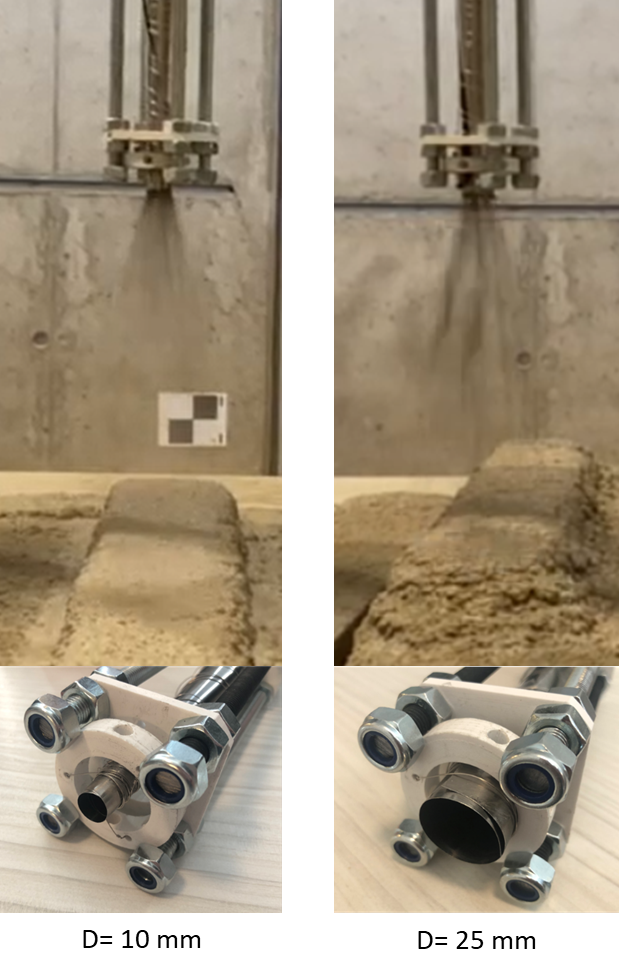Research Summary Report of A04
Integrated Additive Manufacturing Processes for Reinforced Shotcrete 3D Printing (SC3DP) Elements with Precise Surface Quality
[30.09.2023]
David, Martin; Doctoral Researcher, m.david@tu-braunschweig.de, TU Braunschweig, Institute for Machine Tools and Production Technology (IWF)
Summary and Current state of research
Project A04 aims to investigate cooperative Additive Manufacturing (AM) processes based on Shotcrete 3D Printing (SC3DP) for the production of material-efficient, force-optimised, reinforced, load-bearing concrete components with precise surface quality and geometrical precision. The goal is to produce large-scale concrete elements using significantly lower amounts of reinforcement and concrete as compared to standard concrete construction principles. Hereby, different robot guided end effectors are subject to research in a flexible and automated process chain.
Currently, the following key points are researched by the workgroup Dröder:
- Improvement of SC3DP process, reinforcement integration and surface treatment by identifying and expanding the respective process window and end effectors,
- Characterisation and identification strategies regarding combined reinforcement placement,
- Research on planning strategies for combined process chains containing SC3DP, reinforcement integration and surface treatment.
For SC3DP a variation in process parameters and their influence on the resulting strand geometry was investigated. Especially a change in the nozzle outlet diameter led to a significant change in strand geometry and material properties. To vary the nozzle outlet diameter, a mechanism was developed and tested. Similar results were observed as in the investigations with static nozzles. The strand width of the printed specimen can be reduced or increased depending on the nozzle outlet diameter. At 10 mm outlet diameter the strands had a width of 118 mm, while at a 20 mm diameter it was reduced to 94 mm. Further results and an in depth discussions on the changes in material properties can be found in [1,2].
Additional investigations regarding the surface design and precision were conducted. Especially methods to process freeform surfaces are crucial to fully use the flexibility SC3DP provides. Future research will therefore focus on parallel- and post-processing strategies for components build with SC3PD to increase the geometrical accuracy and the quality of the component surface.
Literature:
[1] David, M.; Freund, N.; Dröder, K.; Lowke, D. (2023): The Effects of Nozzle Diameter and Length on the Resulting Strand Properties for Shotcrete 3D Printing, Springer Materials and Structures. Pre-Print: https://doi.org/10.21203/rs.3.rs-3142213/v1
[2] Freund, N.; David, M.; Böhler, D.; Mai, I.; Ullmann, S.; Dröder, K.; Lowke, D. (2023): Shotcrete 3D Printing – Interaction of nozzle geometry, homogeneity and hardened concrete properties, Proceedings ‘Internationale Baustofftagung ibausil’, Weimar, Germany.

Figure 1: Scroll nozzle mechanism for a variable nozzle outlet diameter to change the strand geometry and material properties [1].









